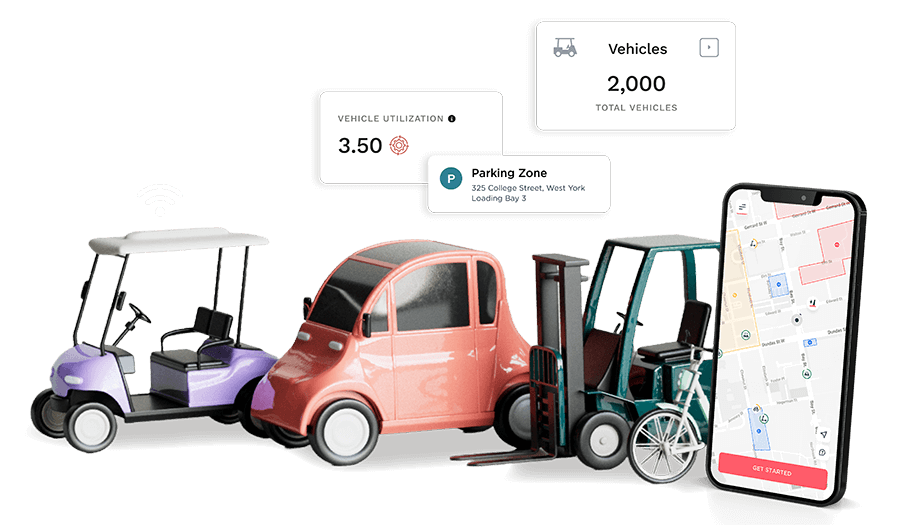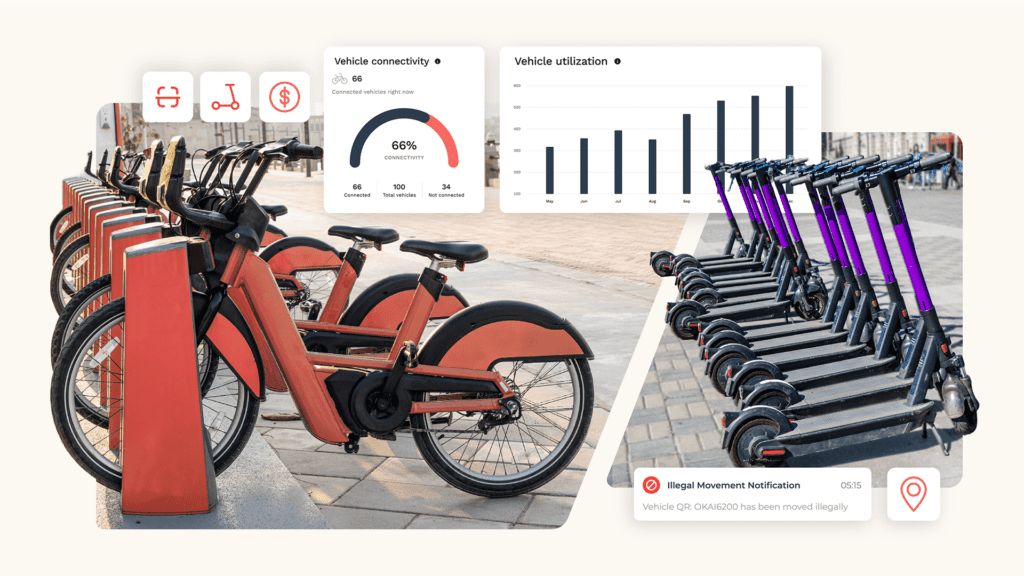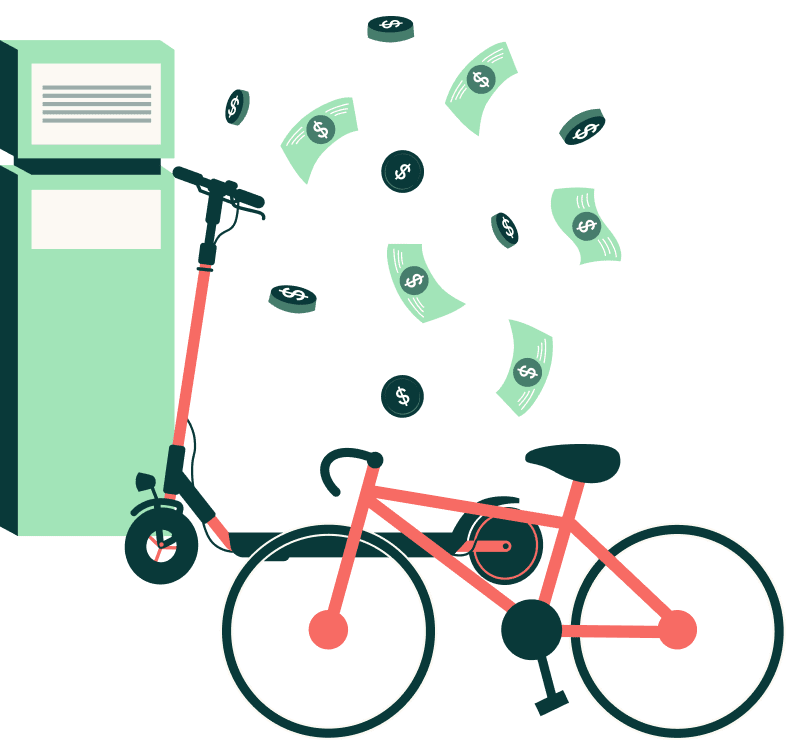Shared micromobility is a competitive niche, meaning operators are constantly seeking creative ways to differentiate and market their services. In a nutshell, marketing is the promotion of your company and what it sells. In this case you’re selling fun, flexible, eco-friendly transportation.
While traditional marketing methods are essential, fleet owners can go a step further by leveraging the secret power of their rider applications: incentives.
As part of Joyride Academy’s two-part Micromobility Marketing Masterclass series, today we’re providing an excerpt on the power of incentives–how, when and why they’re essential to your fleet’s success.
How does giving free rides help your bottom line?
After factoring in hefty insurance premiums, daily operations and vehicle depreciation, it might seem downright crazy to be giving out free rides. But it’s not just about being free – it’s about nurturing relationships with existing customers and reducing friction for potential new ones.
In other words, strategic in-app incentives are your ticket to reducing user drop-off and building brand loyalty.
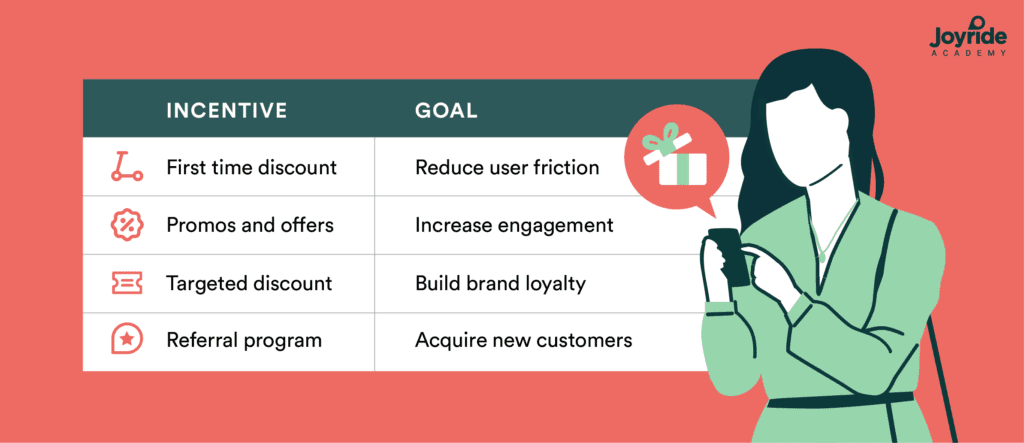
There are four types of incentives we see working for shared micromobility operators using the Joyride platform. Each of these incentives serves a specific goal for customer acquisition or retention. Let’s take a closer look at each.
1. First time discount
Goal: Reduce user friction
For the low price of your consent to receive marketing emails, most service-based businesses offer a free trial. While only a fraction of these leads will become paying customers, the ‘try before you buy strategy’ is one way operators can reduce friction in the user’s decision-making process.
For scooter and bike sharing this could mean waiving the unlock fee, discounting the first ride or even making it free (up to a certain limit). By eliminating the major barrier to entry, in this case cost, those who are apprehensive about safety or simply new to using an electric vehicle are more likely to give it a try. The more you can reduce friction in the user journey, the greater chance of customer uptake.
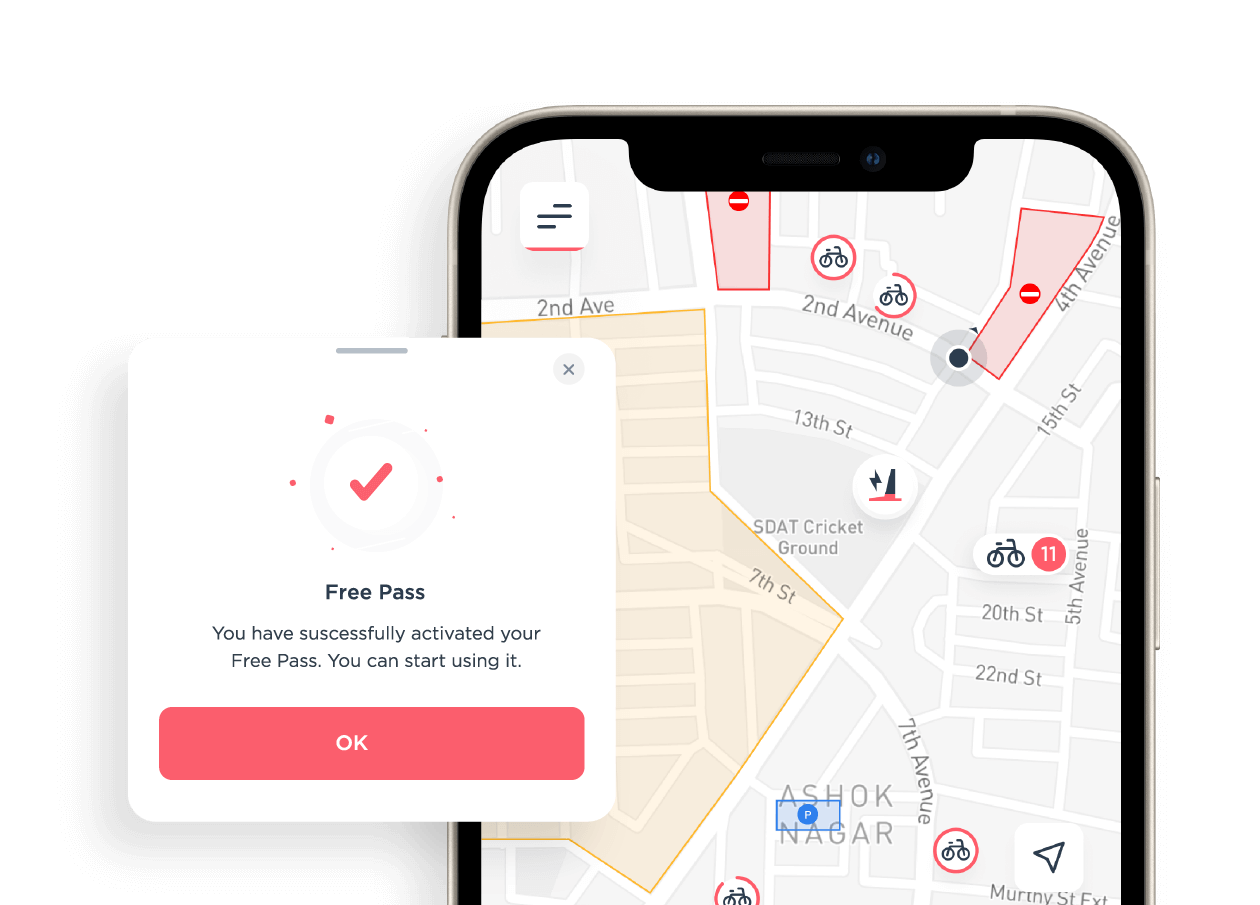
To put this into practice, you could incorporate a promo into the branding of your vehicles, docking stations and/or designated parking areas. When new users create an account, a promo code could be embedded in the welcome email. Within the rider app you could have a generic first-ride promo or generate a single-use promo redeemable only to that user.
In-person demo days are another way to bridge the gap for first-timers. Several Joyride operators have seen ridership increase after hosting safety and education events. A free test ride might be all that’s needed to convert curious community members into loyal customers.
2. Promos and offers
Goal: Increase engagement
Typically, an operator in a new market will see a steady uptake rate at the launch of their service, then a dip after ‘try-it oncers’ have done so. Promotions and offers are an excellent tool to keep users engaged and re-engage those who have dropped off the platform.

Promos for shared micromobility are primarily used to give discounts, but come in a variety of forms: free rides, a percent or flat discount at bill, free passes (daily, weekly or monthly) or a wallet credit. Promos can also be used as a way to integrate with wider customer habits and form meaningful partnerships with other businesses.
For example, through custom geofence zones, you could run a promotion with a local cafe and display a custom location pin in the rider app. When a rider enters the zone, you could automate a push notification that offers 25% off a beverage at said cafe.
Operators can choose to make promos and offers available to all users on their platform, or target specific groups with campaigns. Creative cross-business promotions and frequent offers via email and SMS marketing will keep your service top of mind. This is especially important for those operating in markets which allow multiple shared micromobility service providers. If two services are essentially the same, customers will undoubtedly favour the one which offers the best customer experience. Just like how a well tipped bartender has a “generous pour” sometimes the secret to brand loyalty is just a little extra sauce.
3. Targeted discounts
Goal: Build brand loyalty
The surface appeal of publicly shared vehicles is that any customer can rent them with a single easy-to-use app. Though used in the same way, the use case for two customers may be entirely different. With access to the right data, operators can target specific segments of their user base, thereby offering incentives to match behaviors and immediate needs.
Take students, for example. Scooters and bikes are a fun and eco-friendly way for young people without car access to get around the city (and sprawling campuses). One of the major benefits of operating in a college town is the high churn rate of fresh-faced potential customers. Graduates and drop-outs might move away and cease to use your service, but every semester welcomes a fresh batch of potential customers.
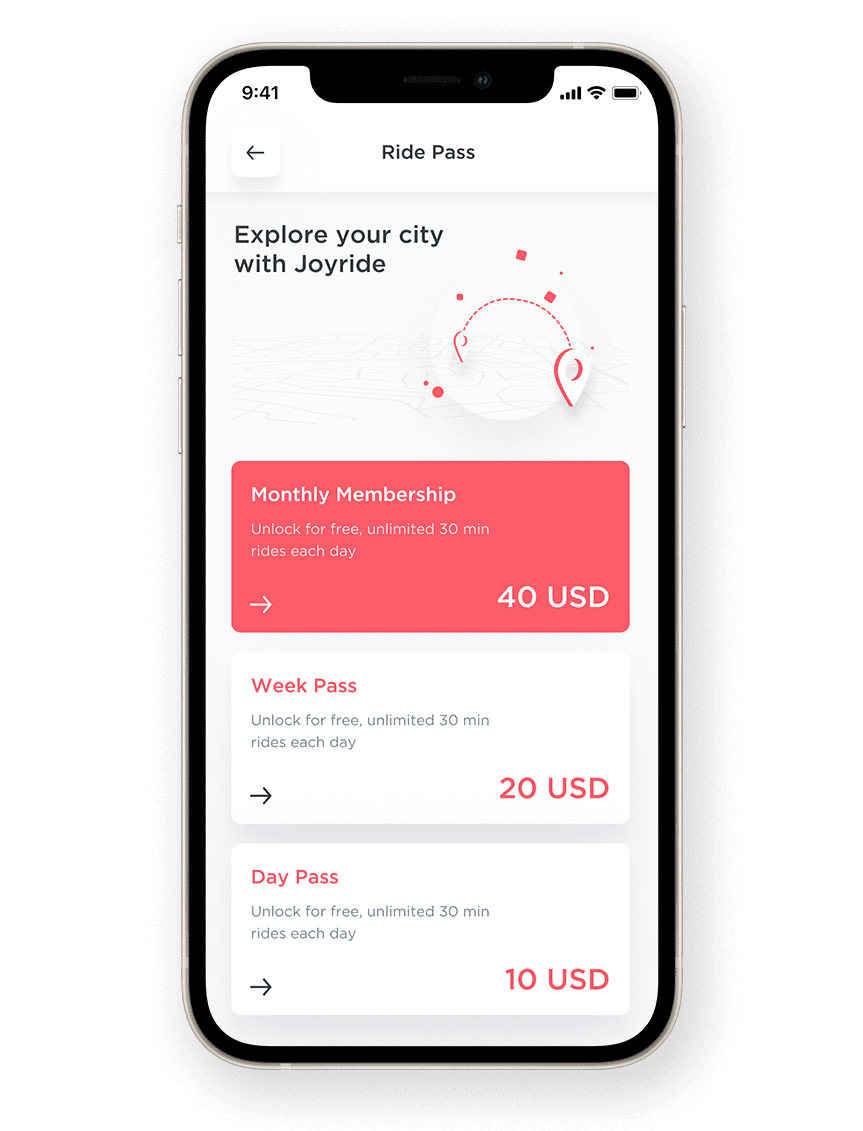
Alas, students notoriously lack funds. To encourage ridership in this demographic many shared micromobility operators collaborate with their local post-secondary institution to offer a student discount.
For example, Voi partners with the University of Bristol to give students and faculty a 20% discount on daily or monthly ride passes. Zipp Mobility has run a similar program with University College Dublin, and Bird recently launched a campus ambassador program called Bird U.
In addition to ride pass discounts, sharable promo codes are popular with students. For example, Bird U ambassadors’ can earn ‘ride points’ free rides by sharing their own personal coupon code.
4. Referral program
Goal: acquire new customers
Word of mouth, also known as referral marketing, is difficult to track. But since 82% of Millennials rely on advice from family and when it comes to products, we’d say it’s pretty important. In return for referring new users to their product or service, companies will reward users with credits to apply to future purchases. In many referral programs the person being referred also gets an incentive when they complete their first purchase.
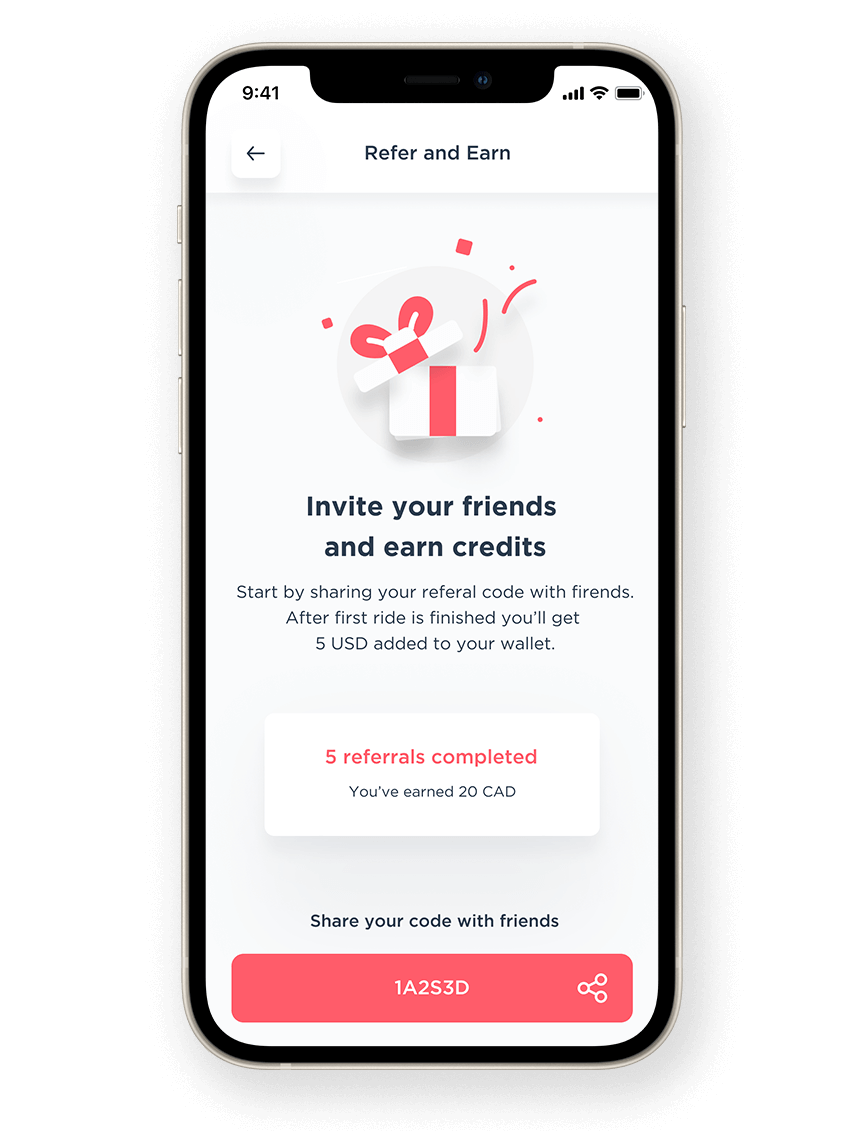
Shared micromobility operators can easily incorporate these strategies. With a ‘Refer and Earn’ feature, users are able to invite their friends to download your application and take rides. Each invitee could receive a wallet credit after sign up and the referrer could get a wallet credit when a referral takes their first ride.
Individual or sharable promo codes is another way to create a ‘refer a friend’ program. Since the discount or credit amount is up to you it might take some experimenting to find the sweet spot for referral volume.
However you decide to implement this incentive, the goal is to reduce customer acquisition cost by putting sales and marketing in the hands of your customers.
Key takeaway
The health of your fleet may be dependent on vehicles, but the health of your operation is dependent on customers. Will giving away free rides really boost your bottom line? In our experience – yes! While picking the right incentives for your market takes some trial and error, focused effort to incentivize rider behaviour will inevitably lead to increased revenue and customer retention.
Powering every point of your operation
At Joyride, we’re passionate about enabling entrepreneurs in the micro-transit space. This means round-the-clock customer service and providing our operators with ongoing learning tools to ensure their fleets are best-positioned for market domination.
We’re just scratching the surface. For more tips and best practices, head over to Joyride Academy, or email us to learn more about our white-label platform – packed with powerful features to boost your fleet utilization.


